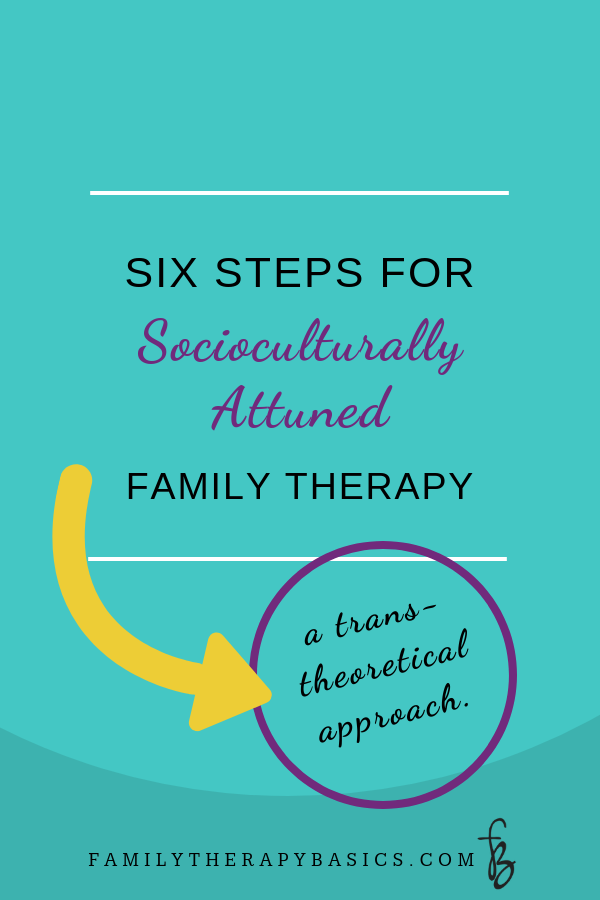Working with children in family therapy is a challenging and exciting process that elicits therapists' creativity. It also has the potential to generate anxiety and lead us to make decisions out of fear rather than faith in our client families.
This article is the first in a series on family therapy with children, during which I'll cover six general guidelines for working with families. You'll learn how to engage every member of the family, stay mindful of your triggers, support children's voices in therapy, and more.
Introduction: Who do you want in the therapy room?
Marriage and family therapy (MFT) as a field marked a departure from the psychoanalytic, individual pathology perspective that was the governing orientation of the time. The pioneers viewed MFT not as a modality based on who was in the room (i.e., couple therapy, family therapy, group therapy, etc.), but rather, as an epistemology that offered a new way of viewing problems (Patterson et al., 2018). Problems (as well as strengths) were developed and maintained between people--in interactions. This is what set (and still sets) the MFT field apart from other psychotherapeutic disciplines.
For this reason, the founders of MFT invited entire families to the therapy room, regardless of who called for therapy. Whether a parent called for help with a troubled teen, an adult called due to marital discord, or an individual called as a result of personal struggles, MFT founders invited parents, immediate family members, and/or entire family systems to therapy.
This history is a reminder that therapists' first task in working with children in therapy is to determine the therapeutic structure: Who should be in the therapy room?
"The battle for structure is, in essence, the decision over who will attend the therapy meeting. Napier and Whitaker (1978) say, 'every [family] member is important,' and when families 'elect' to attend therapy without a particular family member, they are not only deciding to go against the therapist’s request, they are also sending a subtle (or not so subtle) message to the missing member: The missing member will wonder, 'Do I matter?'" (cited from this post)
I contend that the opposite is also true. If parents "drop off" a child in therapy, without participating, or inviting the child's siblings to participate, it is likely that the context of therapy will remind the child of the family's distance. Therapy, without significant others, may lead the child to wonder, "Do I matter?"
Traditional family therapists did not work with children alone. In order to conceptualize and treat problems effectively, parents (and ideally, the entire family) must be partners in the therapeutic process. Consider the following guidelines as steps that will support the relational therapeutic alliance in family therapy, when a child is the identified patient.
Guideline #1: The presenting problem is a window into the system dynamics that contribute to the problem.
The presenting problem, whether behavioral, adjustment related, or an official diagnosis, is simply one, limited perspective on the problem. For example, in the case of a child diagnosis, the following will expand the view of the presenting problem:
seeing the diagnosis as society’s mental health perspective, which categorizes symptoms.
the family’s conceptualization of the problem.
the family's environmental load; that is, its external stressors. (Ungar, 2016)
stressors internal to the family system, including recent transitions, losses, family stage, etc.
Taken together (along with additional system factors), this information will move you and the family from an individual to a relational conceptualization of the problem, which is one of the common factors unique to MFT (Sprenkle & Blow, 2004).
Whether you think in Bowen terms--the child is the symptom bearer, in Structural terms--the child’s behavior is a result of family structure and interaction, or in Narrative terms--the child and the family are defeated by the symptoms--what's essential for effective family therapy is that you make the journey from individual problem to system problem.
This matters, because it helps you keep a systemic perspective and understand that the child is not the problem, nor is the child’s behavior.
Guideline #2: Parents are your allies as well as members of the system. This gives them a unique position.
When the child is the identified patient, it's necessary to involve the parents in therapy as much as possible. According to Bowen (1993), problems are created in relationship, and therefore are resolved in relationship.
Parents serve as learners, support, leaders, and hope-givers to their children both in therapy and at home. In order to develop their view of themselves as resources for their children, the problem must be stated as something that the parent can solve (Sells, 1998). For example, discussing the diagnosis as the whole problem does not catalyze parents' agency. However, phrasing the problem in behavioral language, or offering concrete tasks to each family member that will support change, will show family members how they can make a difference.
This matters, because parents must see themselves as part of the solution, in order to maintain hope for themselves and their families.
Guideline #3: Keep in mind ages and stages.
Use each member's age and life stage, as well as the family's stage in the family life cycle (Patterson et al., 2018) to conceptualize individuals and the system, including resources, challenges, history, and goals.
When the child is the identified patient, the following child stages can assist you in making treatment decisions (Patterson et al., 2018):
Very young: Conceptualize the problem from an attachment perspective. Parental tasks are focused on creating safety and opportunities for connection. The therapist's main role is to facilitate connection between children and parents in therapy, and teach parents how to nurture connection at home. Main interventions used at this stage are centered around systemic play and art therapy.
School-aged: Conceptualize the problem from an expanded social system perspective. The child has transitioned from being home, mainly, to navigating a variety of new contexts. Assess the child's developing independence, competency, and sense of mastery at school and in social situations. Interventions for this stage include systemic play and art therapy, experiential therapy (e.g., family sculpting, role play, drama, etc.), and talk therapy with the family, while involving larger systems (such as school, and/or faith organizations) in the therapeutic process, when indicated.
Adolescent: Conceptualize the problem by overlapping individual life stages (of children and parents) with the family's life cycle stage. Involve members of the child/family's larger systems (e.g., significant school personnel, mentors, peers, extended family members, etc.). Consider where boundaries in the family fall on the spectrum of rigid to diffuse, and on the range from enmeshed to disengaged. The most common and effective interventions at this stage involve strategies for helping parents allow the adolescent's increasing need for independence, while developing safety through limit-setting and nurturing. Effective therapeutic models for this stage include Structural Family Therapy, and family resilience-building.
Ages and stages, when the problem has already been conceptualized as a systemic problem, will guide you in best practices for engaging children in the therapeutic process, while, at the same time, addressing parental hierarchy, stressors, and communication with children. This matters, because a full-system approach creates lasting change.
Stay tuned!
In the next article in this series, I'll be covering guidelines 4-6 for working with children and families systemically.
>> Read part 2.
Don't miss a post!
References
Bowen, M. (1993). Family therapy in clinical practice. Lanham, MD: Jason Aronson.
Napier, A., & Whitaker, C. A. (1978). The family crucible. New York, NY: Harper & Row.
Sprenkle, D. H., & Blow, A. J. (2004). Common factors and our sacred models. Journal of Marital and Family Therapy, 30(2), 113-129.
Ungar, M. (2016). Varied patterns of family resilience in challenging contexts. Journal of Marital and Family Therapy, 42(1), pp. 19-31.
Let's Chat
Let me know, in the comments below.
What are your favorite interventions for working with families?
What one thing was useful from this article?













